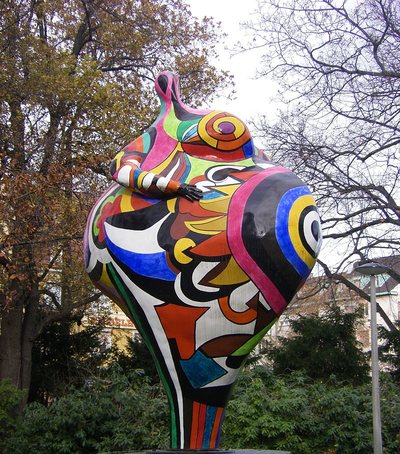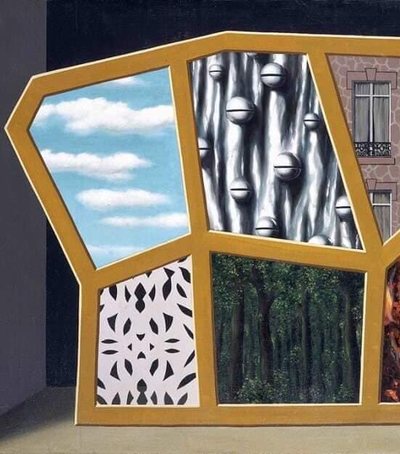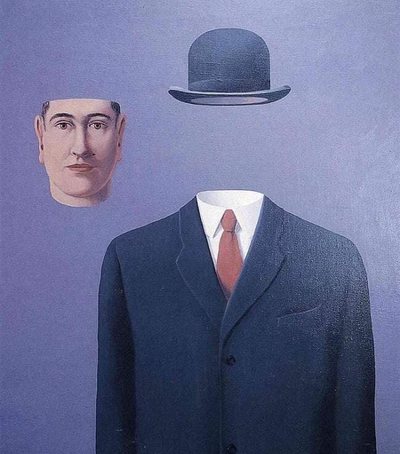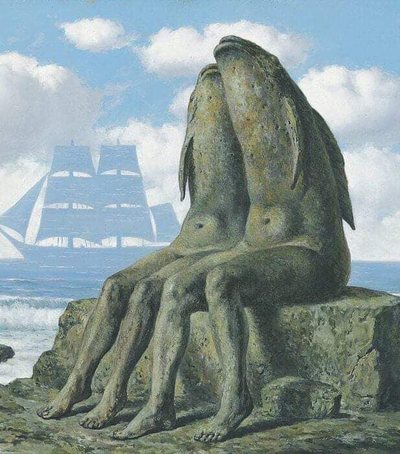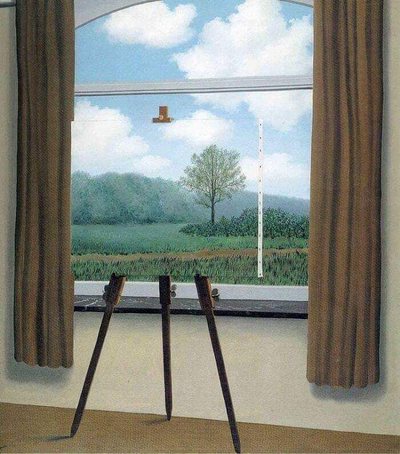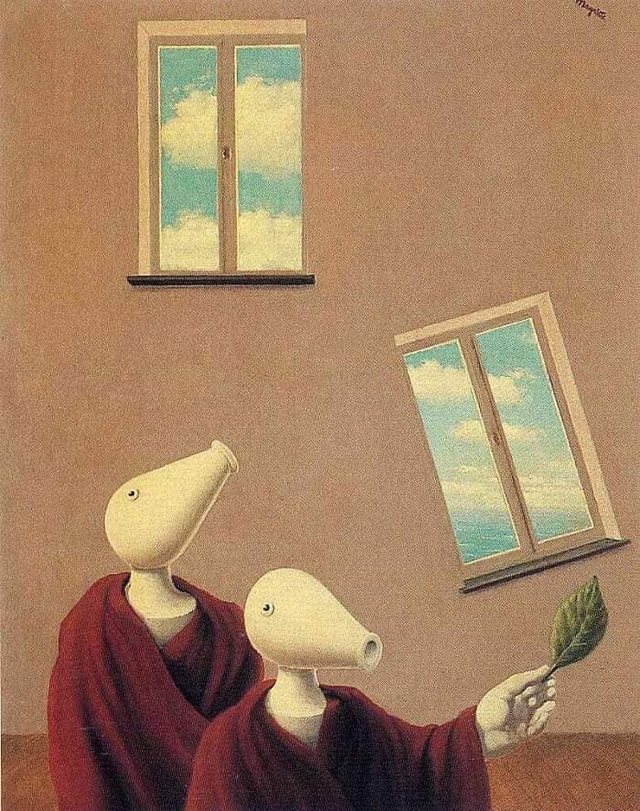
The experience of this painting can be like a strange encounter. First and foremost, it is the soft, sweet purple color of the wall surface that dominates the entire canvas, becoming warmer and deeper near the bottom of the floor and into the purple-to-red tones of the two strange mannequins.
The chest height of the two mannequins and the lack of convergence of any lines creating a perspective make it impossible to gauge the distance of the figures from the wall or the dimensions of the room. Converging lines appear only in the window frames. The window on the left is viewed from the right, the one on the right is viewed from the left, and the latter also appears to be sliding down at an angle; the drop is emphasized by the horizon of the sea and clouds, visible through the windows.
This is the only suggestion of an outside world, of a third dimension, which is slowly shown into the room by two moon-pale mannequins – two strange half-naked creatures with animal eyes and small snouts – and by two strange windows which have lost their usual fixed position in the wall through the collapse of the window on the right. This has become an uncertain and unstable world, where neither the window nor the wall itself collapses, although the relationship between them is ambiguous. The wonderful features of this picture lie in the bright colors of the daylight of the real world around us, isolated and visible in a concentrated way within the rectangle of the upper window.
Thus, the “meeting” is not between the two mannequins, nor between the viewer and the painting, but between the external and the internal world. This is precisely what Magritte does best – the level of oppositions does not cease to exist, but they lose their significance because – in a moment of enlightenment, we fall so deeply into ourselves that we begin to participate in the meaning of both worlds.

